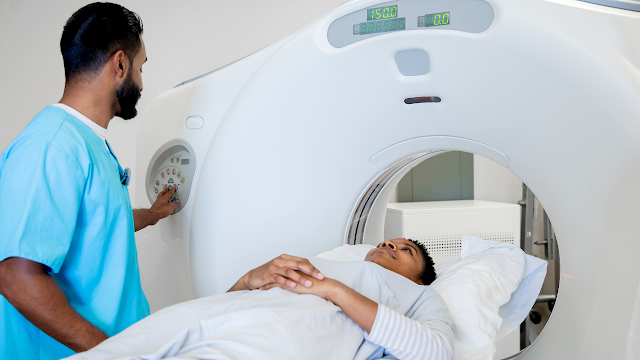The Global Lung Cancer Diagnostic And Screening Market Growing Adoption Of Digital Biomarkers To Diagnose And Screen Lung Cancer
 |
| Lung Cancer Diagnostic And Screening Market |
The lung cancer diagnostic and screening market encompasses various tools and technologies that are used to detect lung cancer at an early stage. Several techniques such as imaging test, biomarkers test, endobronchial ultrasound-guided needle aspiration, and thoracic surgery help diagnose and screen lung cancer.
The global Lung
Cancer Diagnostic And Screening Market is estimated to be valued at US$ 2243.98 Mn in 2023 and is expected to exhibit a CAGR of 42% over the forecast period
2023 to 2030, as highlighted in a new report published by Coherent Market
Insights.
Market key trends
The growing adoption of digital biomarkers is expected to be a key trend
fueling the lung cancer diagnostic and screening market growth over the
forecast period. Digital biomarkers are objective, quantifiable physiological
and behavioral data that can be acquired through digital sensors and used to
assess health-related states and outcomes. They help in the early detection of lung
cancer through the integration of digital tools into routine clinical practice. For
instance, digital chest X-rays help in detecting subtle changes in lung tissues
over time and aid diagnosis. Similarly, biomarkers such as circulating tumor
cells and tumor-derived extracellular vesicles in bloodstream provide insight
into tumor biology and disease progression. The quantitative collection of
digital biomarkers through smartphones and wearable devices expands access to
lung cancer screening tests and improves patient outcomes. This rising adoption
of digital technologies for screening and diagnosing lung cancer is anticipated
to boost market growth.
Segment Analysis
The global Lung Cancer Diagnostic and Screening market is dominated by the
cancer diagnostics segment. This segment accounts for over 35% of the total
market share owing to the increasing adoption of innovative diagnostic
techniques such as biopsy, chest x-ray, sputum cytology, and molecular
diagnostics for detecting early stages of lung cancer. The cancer screening
segment is expected to witness the fastest growth during the forecast period
owing to the rising awareness regarding regular health checkups and screening
programs conducted across major countries globally.
Key Takeaways
The global Lung
Cancer Diagnostic and Screening Market is expected to witness high
growth over the forecast period of 2023 to 2030. The global lung cancer
diagnostic and screening market Market is estimated to be valued at US$ 2243.98 Mn in 2023 and is expected to exhibit a CAGR of 42.% over the forecast period 2023 to 2030
Regional analysis
North America currently dominates the global market with over 40% market share.
This is attributed to the wide availability of advanced healthcare facilities
and increasing healthcare expenditure in countries like the US and Canada. The
Asia Pacific region is projected to grow at the fastest rate during the
forecast period due to large patient population, increasing penetration of
diagnostic services, and rising healthcare expenditure in major emerging
countries like India and China.
Key players
Key players operating in the Lung Cancer Diagnostic and Screening market are
ABB; ANSYS, Inc.; Autodesk Inc.; AVEVA Group plc; Amazon Web Services, Inc.;
Dassault Systèmes; GE DIGITAL; General Electric; Hexagon AB; IBM Corporation;
Microsoft Corporation; PTC Inc.; Rockwell Automation; SAP SE; Siemens AG.
Get More Insights On This Topic: https://www.pressreleasebulletin.com/lung-cancer-diagnostic-and-screening-market-is-driven-by-technological/



Comments
Post a Comment